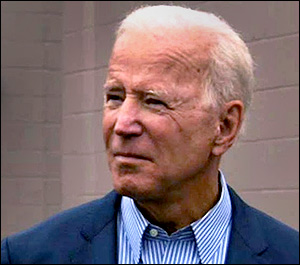
Daily Kos Elections – presidential results by congressional district. Click on image to see full interactive map at Daily Kos.
By Jim Ellis
Dec. 14, 2020 — The Daily Kos Elections organization is rapidly going through the election returns to provide a presidential vote depiction for every congressional district. At this point, they are only about a quarter of the way through the country but have already recorded some critical battleground states such as Iowa, Michigan, Nevada, Ohio, and Wisconsin.
Dividing the national presidential vote into individual congressional districts portends better analysis because patterns are easier to decipher and analyze in smaller geographic segments.
In the aforementioned five-state region, 46 congressional districts are housed. Turning to the November election, Republicans won 28 of the US House seats in these states while Democrats recorded 18 victories. Just two of the CDs, both in Iowa, switched parties, and went from Democrat to Republican.
In these decisive states, several interesting patterns became evident. What appears clear, in most instances, is President Trump improving upon his 2016 vote percentages and former vice president Joe Biden surpassing Hillary Clinton’s totals of four years ago in all but four of the 46 congressional districts.
Trump exceeded his 2016 percentage performance in 35 of the 46 districts and failed to do so in 11. This despite the fact that he would lose three of the five states studied in this exercise.
Perhaps the most indicative finding centers around President Trump’s standing when compared with the various Republican congressional candidates in all of the tested districts. The fact that he finished under the GOP congressional candidate’s percentage in 32 of the 46 CDs is significant and the key to understanding why he lost two of the states that he carried in 2016. The totals suggest that Republican elasticity in these 32 districts was greater than what the President achieved.
Such is particularly true in the state of Wisconsin, a place Trump lost this year by just over 20,000 votes of almost 3.3 million ballots cast, or only half a percentage point. When examining the eight Wisconsin federal districts, we see Trump running behind the Republican congressional candidate in all five of the GOP-held districts and in two of three Democratic seats.



